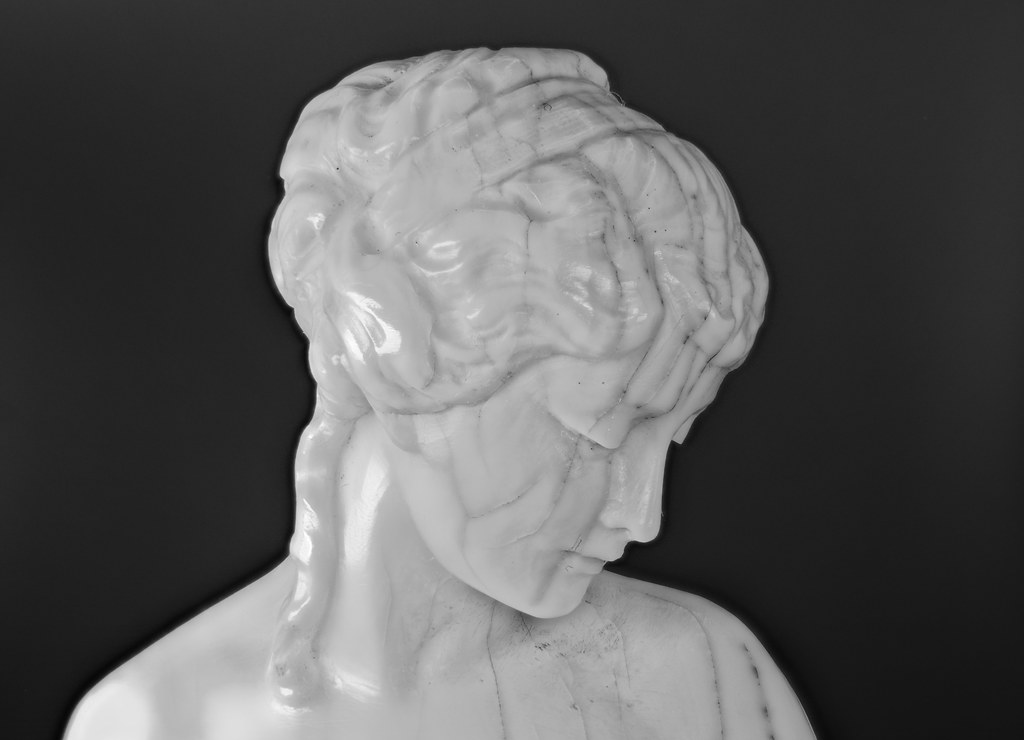You are using an out of date browser. It may not display this or other websites correctly.
You should upgrade or use an alternative browser.
You should upgrade or use an alternative browser.
Something a little different....
- Thread starter footman
- Start date
GardenersHelper
In Memoriam
- Messages
- 6,344
- Name
- Nick
- Edit My Images
- Yes
Interesting use of stacking.
Perhaps the dark halo around the shoulders is a stacking artefact rather than a shadow? I get that quite often when stacking plants when using the pyramid method in Helicon Focus. I often use a combination of two stacks to get round it, using a pyramid stack for the subject and a depth map stack either painted just around the outside of the subject where there is a halo, or, much less often, for all of the background if edge painting doesn't work too well.

NOT MY IMAGE - footman statuette. Threshold 19 - possible stacking halo by gardenersassistant, on Flickr
Perhaps the dark halo around the shoulders is a stacking artefact rather than a shadow? I get that quite often when stacking plants when using the pyramid method in Helicon Focus. I often use a combination of two stacks to get round it, using a pyramid stack for the subject and a depth map stack either painted just around the outside of the subject where there is a halo, or, much less often, for all of the background if edge painting doesn't work too well.

NOT MY IMAGE - footman statuette. Threshold 19 - possible stacking halo by gardenersassistant, on Flickr
- Messages
- 563
- Name
- Paul
- Edit My Images
- No
I really don't get this current trend for stacking.
I just shot a huge range of small ornaments for high-end website and catalog. Fact there was a team of three of us shooting it was such a large collection. We didn't stack any images and everything is all in focus.
On very rare occasions that I have focus stacked I'm normally only using two or three images.
So why do you think you need 54? And how long did that take?
I just shot a huge range of small ornaments for high-end website and catalog. Fact there was a team of three of us shooting it was such a large collection. We didn't stack any images and everything is all in focus.
On very rare occasions that I have focus stacked I'm normally only using two or three images.
So why do you think you need 54? And how long did that take?
- Messages
- 4,695
- Name
- Laurence
- Edit My Images
- No
I don't follow current trends, this is simply me and my life long desire to get deeper into anything I do just to see what happens. I wouldn't normally shoot ornaments like this, insects are more my style but at this time of the year they are pretty much absent from my garden so I cast around for other subjects.I really don't get this current trend for stacking.
I just shot a huge range of small ornaments for high-end website and catalog. Fact there was a team of three of us shooting it was such a large collection. We didn't stack any images and everything is all in focus.
On very rare occasions that I have focus stacked I'm normally only using two or three images.
So why do you think you need 54? And how long did that take?
Of course stacking as not absolutely necessary to get acceptable results in insect macro photography but when dealing with very small subjects full of detail and colour then stacking is a good tool to bring the entire subject into full focus and retain all the minute details and colour. But that's all it is...a tool for the job, others are available.
I didn't decide on the number of images randomly. It was the result of choice of aperture, the magnification of the lens and the physical dimensions of the subject. This data is fed into the software of the automatic focus rail and the number of steps is calculated to get optimum results. It takes a while as does the post processing.
I also use a manual focus rail where I make all the decisions but the result can sometimes be more random.
Last edited:
- Messages
- 4,695
- Name
- Laurence
- Edit My Images
- No
I wouldn't choose a wide aperture if shooting in the field without stacking, I often shoot at apertures ranging from F8 to F22 depending on the size of the subject and the atmospheric and lighting conditions.
When stacking indoors there are other variables to consider such as what effect the choice of aperture will have on the final image as determined by the stacking software. This is also dependent on the size of the subject and also the distance from the subject to any background which may or may not be in focus. Sometimes the wrong choice of aperture will causes haloing and other artefacts in and around the subject.
It's only fun!
When stacking indoors there are other variables to consider such as what effect the choice of aperture will have on the final image as determined by the stacking software. This is also dependent on the size of the subject and also the distance from the subject to any background which may or may not be in focus. Sometimes the wrong choice of aperture will causes haloing and other artefacts in and around the subject.
It's only fun!
GardenersHelper
In Memoriam
- Messages
- 6,344
- Name
- Nick
- Edit My Images
- Yes
I really don't get this current trend for stacking.
I just shot a huge range of small ornaments for high-end website and catalog. Fact there was a team of three of us shooting it was such a large collection. We didn't stack any images and everything is all in focus.
On very rare occasions that I have focus stacked I'm normally only using two or three images.
So why do you think you need 54? And how long did that take?
You can get results with stacks that you can't with single stills, and vice versa. That is why when I'm photographing botanical subjects out in the field ("the field" mainly being our garden) I use both approaches. Sometimes I know that a stack won't work, and so I use single stills. Sometimes I know that only a stack will work, so that is what I use. Sometimes I have no idea which I will like best, or I think a stack would probably be best but I don't know if it would work because of the breeze, so in either of these cases I use both approaches.
I am aiming for (what strike me as) "nice pictures" rather than reference/identification shots, and for me that has to do with the balance between the rendition of the subject, including how much of it is in focus, and the rendition of the background. So as to get plenty of options to work with I use aperture bracketing for the stills, so I get shots from f/2.8 to f/22 with a single press of the shutter button. For the stacks I use video, so with a capture rate of 30 fps the captures don't take long (all this hand-held btw - for my taste using a tripod or other support slows me down and is too awkward and inflexible).
Here are several images that could not have been created from single stills.
32 focus stacked 6K video frames
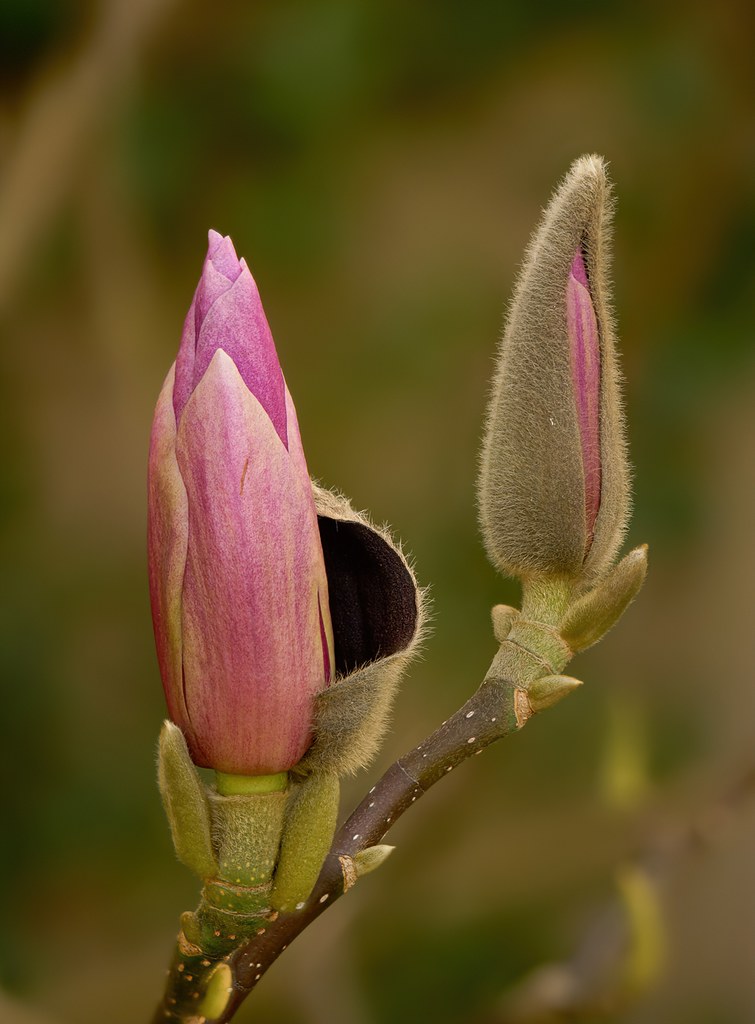
1462 19 1457 05 2019_03_11 P1015812 G9+60 HHPFS32f F2.8 1-500 ISO400 EV-1 A29,2+innerC1 LR 1300h-sharpen by gardenersassistant, on Flickr
34 focus stacked 6K video frames
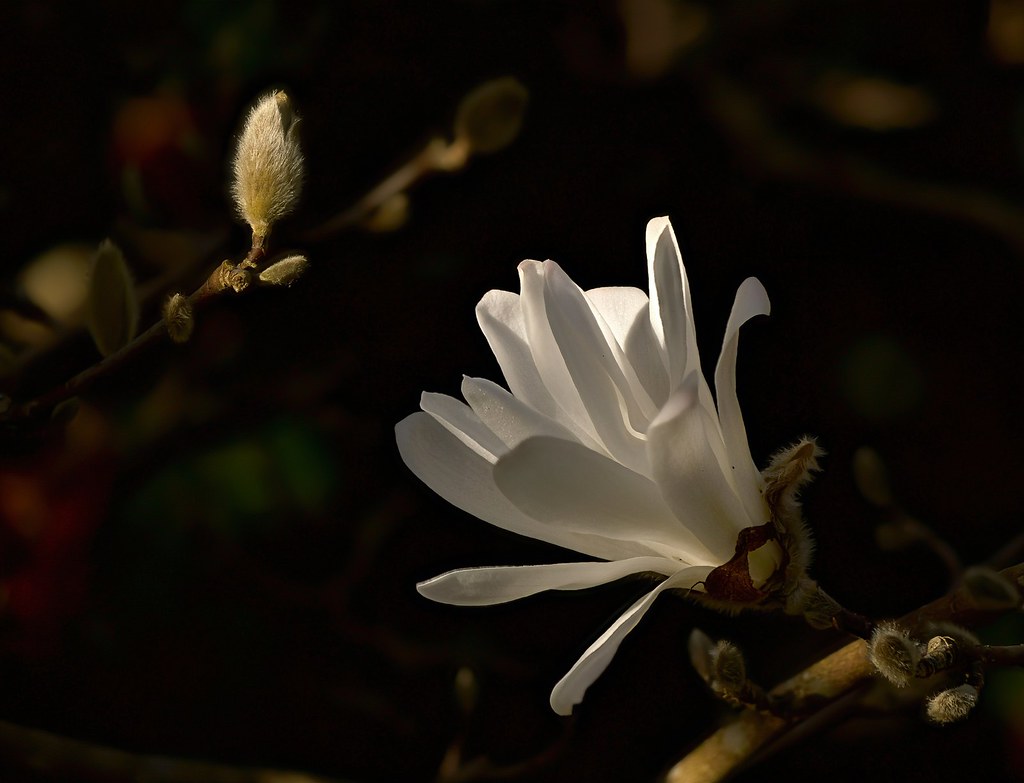
1457 12 2019_03_11 P1015867 G9+60 HHPFS34f F2.8 1-2000 ISO100 EV-1.7 C1 LR 1300h-sharpen by gardenersassistant, on Flickr
71 focus stacked 6K video frames
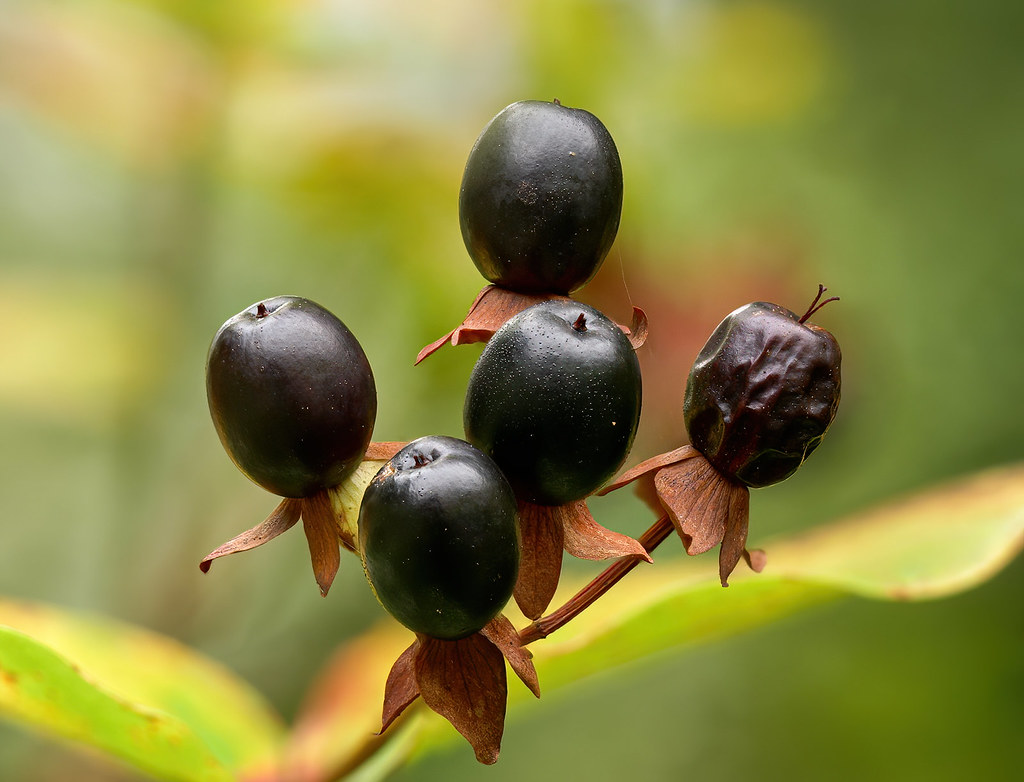
1596 07 2020_01_08 P1122238 71f B26,4+C4 LR 1300h-DNAI by gardenersassistant, on Flickr
201 focus stacked 4K video frames
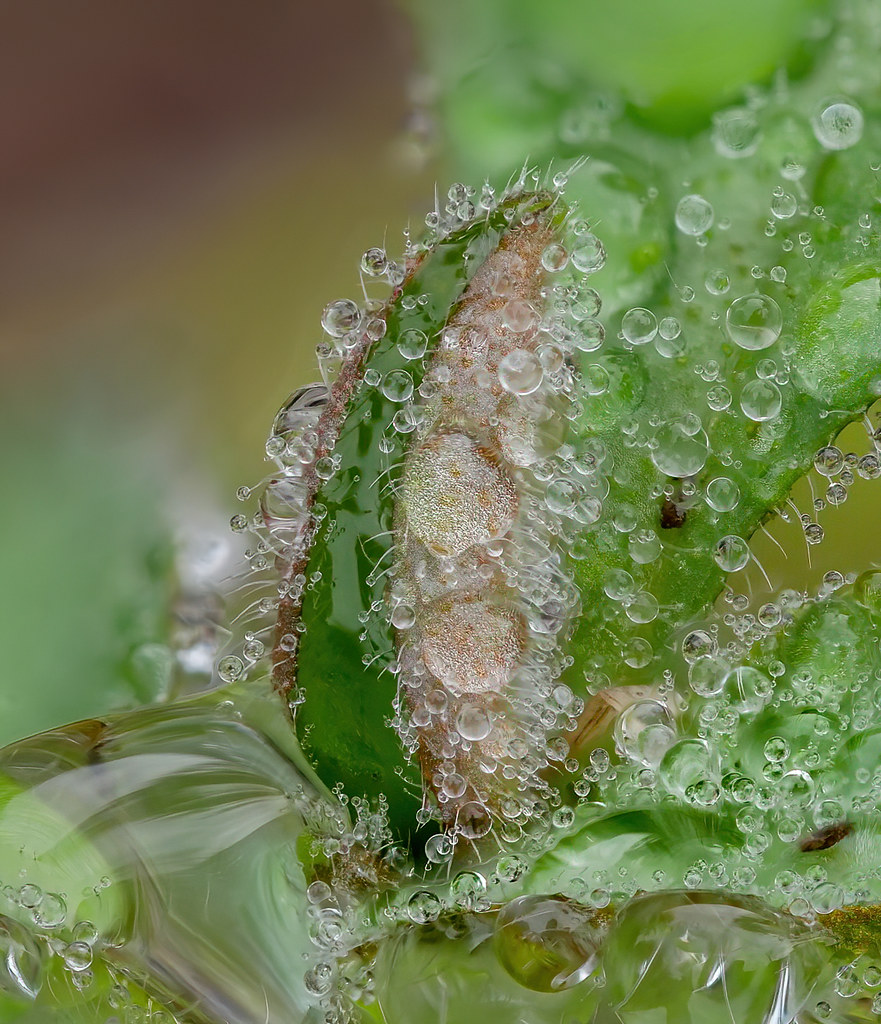
1276 06 2018_01_12 G80+60 F2.8 ISO 800 1-500 PF 201f (B,19,1+outer B,19 10)) P1140279LR6 1300h DNAI by gardenersassistant, on Flickr
Here are three images which might or might not have been possible with stacks, but for which stills were sufficient and convenient.
Horses for courses.

1304 31 60 macro P1190084_DxO LR7 1400h by gardenersassistant, on Flickr
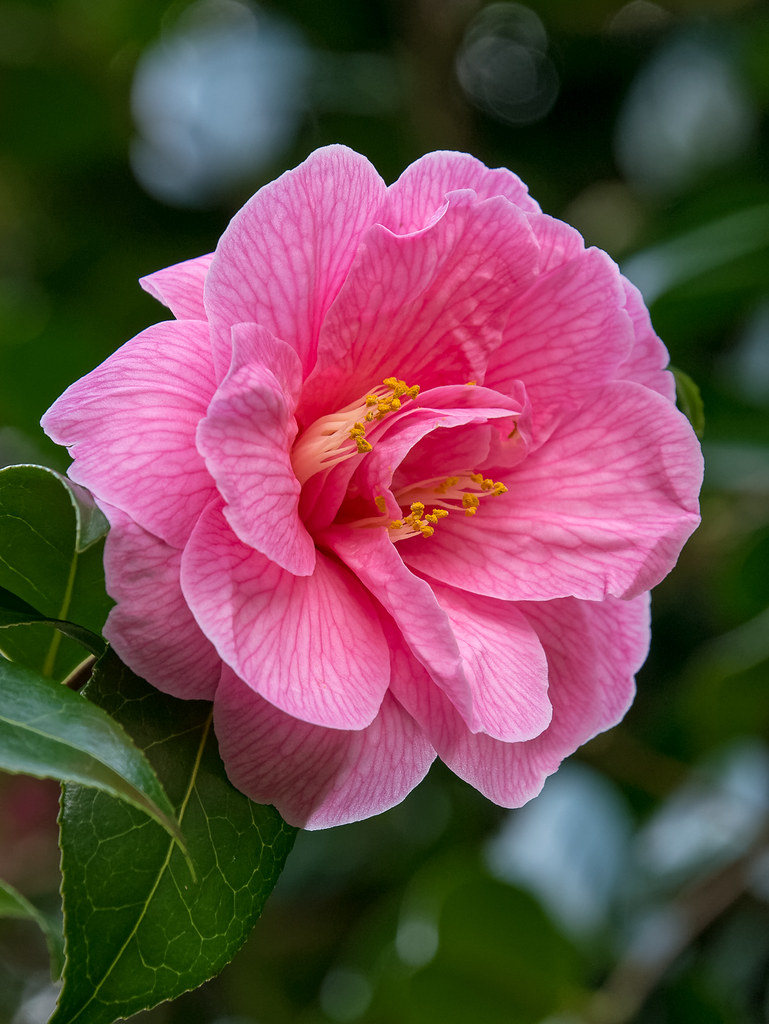
1304 10 14-140 P1010031_DxO LR7 1400h by gardenersassistant, on Flickr

1304 15 14-140 P1010105_DxO LR7 1400h by gardenersassistant, on Flickr
GardenersHelper
In Memoriam
- Messages
- 6,344
- Name
- Nick
- Edit My Images
- Yes
I had two goes at this, the first one was at F11 and the dark halo was slightly worse than this effort at F5.6 which surprised me.
That surprises me too. I would have thought (on the basis of no evidence whatsoever) it would be the other way round. Interesting.
I used Zerene to process this, I'm still debating whether to try the 1 year Helicon subscription.
Presumably you are trying out/have tried the Helicon Focus 30 day trial?
I have both Helicon Focus and Zerene Stacker by the way, and I wouldn't want to try to encourage you one way or the other. Both are very good. Helicon Focus is a no-brainer for me because I stack from video and Helicon Focus can ingest and align my videos just by dragging the video into Helicon Focus, including Panasonic's H265 6K videos, which not a lot of applications can handle. As you probably aren't using video then your considerations will obviously be different. I have a hunch, that Zerene may be more popular with invertebrate shooters and Helicon with botanical shooters. I'm not sure why that would be the case, if it is.
- Messages
- 4,695
- Name
- Laurence
- Edit My Images
- No
@GardenersHelper, Nick, do you have an online resource for the use of video in image stacking.
I made the decision to use Zerene exclusively on economic grounds I'm ashamed to admit
I made the decision to use Zerene exclusively on economic grounds I'm ashamed to admit
GardenersHelper
In Memoriam
- Messages
- 6,344
- Name
- Nick
- Edit My Images
- Yes
@GardenersHelper, Nick, do you have an online resource for the use of video in image stacking.
I made the decision to use Zerene exclusively on economic grounds I'm ashamed to admit
The only online resource I'm aware of is a couple of You Tube videos that I made about my approach to photographing flowers. This involves two techniques, one using stills with aperture bracketing, the other using video for stacking. The thing is though that my approach for stacking depends on the use of a Panasonic camera that has what Panasonic calls "post focus" functionality. This is marketed as a way of deciding where you want a photograph focused after you have taken it. It works by [simplification] capturing a video while the camera racks the focus from the nearest thing it can find to focus on to the furthest and then lets you choose which frame(s) you want to keep, and also lets you do a (for my purposes not good enough) in-camera focus stack. I ignore that and use the underlying video to stack in Helicon Focus.
You are using a Sony camera, which doesn't have post focus. It is possible to "do it yourself" by moving the camera while taking a normal video. I have done this once, as an experiment, and it did work, but it isn't nearly as convenient as using post focus, and probably isn't as reliable (it is difficult to move the camera at a suitable, steady, speed.) I wrote about it in this post.
I don't know whether you would want to try this, but FWIW the two You Tube videos are here (capture technique, which for the stacking videos uses post focus) and here (post processing). If you do watch them you may want to speed them up. In the post processing video, the video stacking processing starts at around 20:00.


